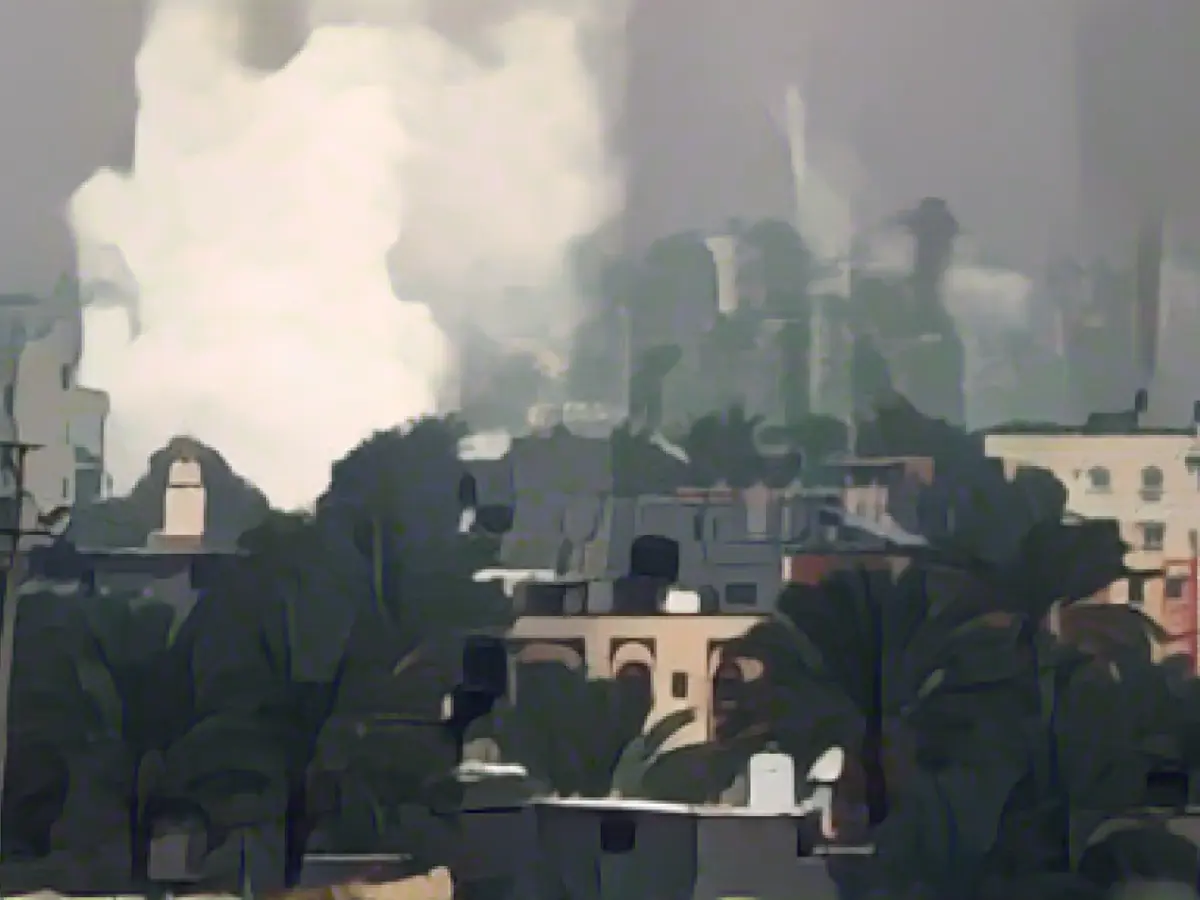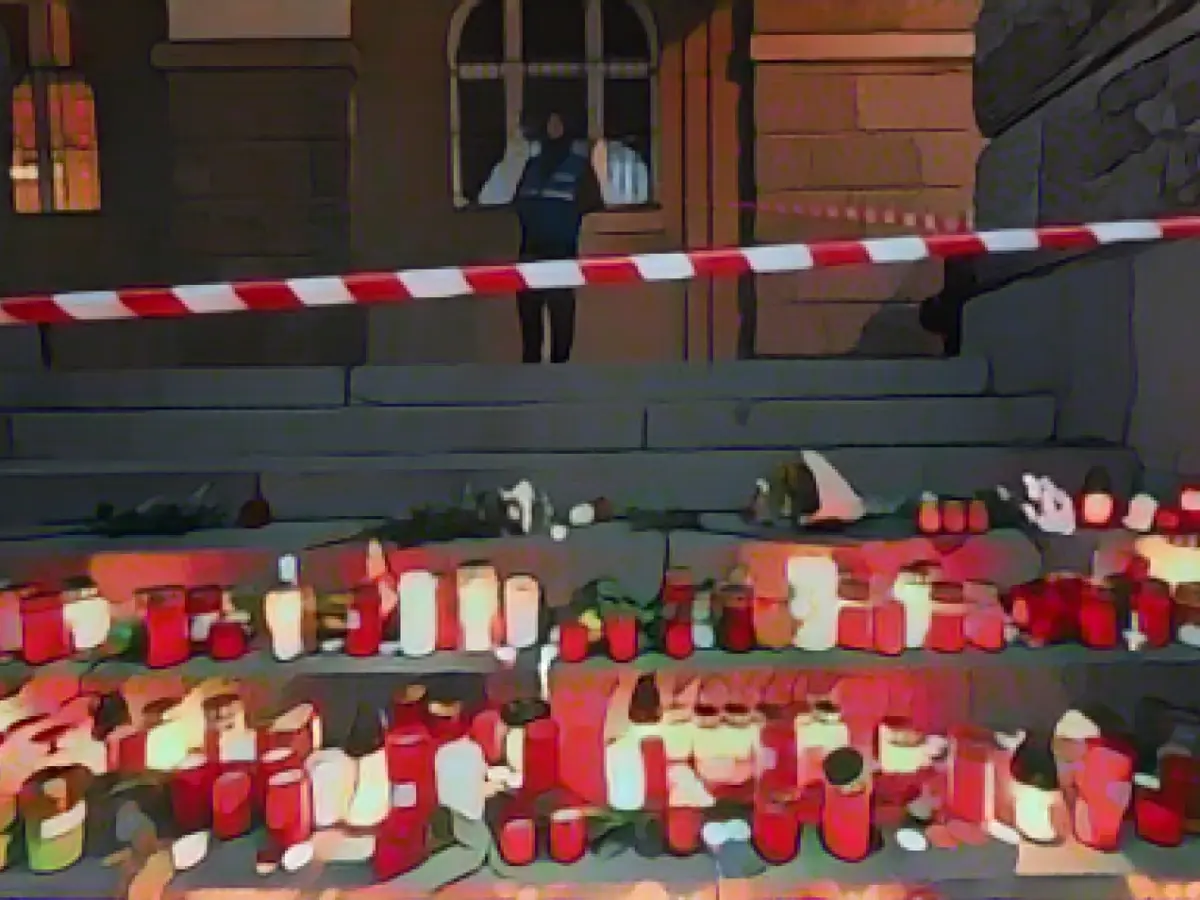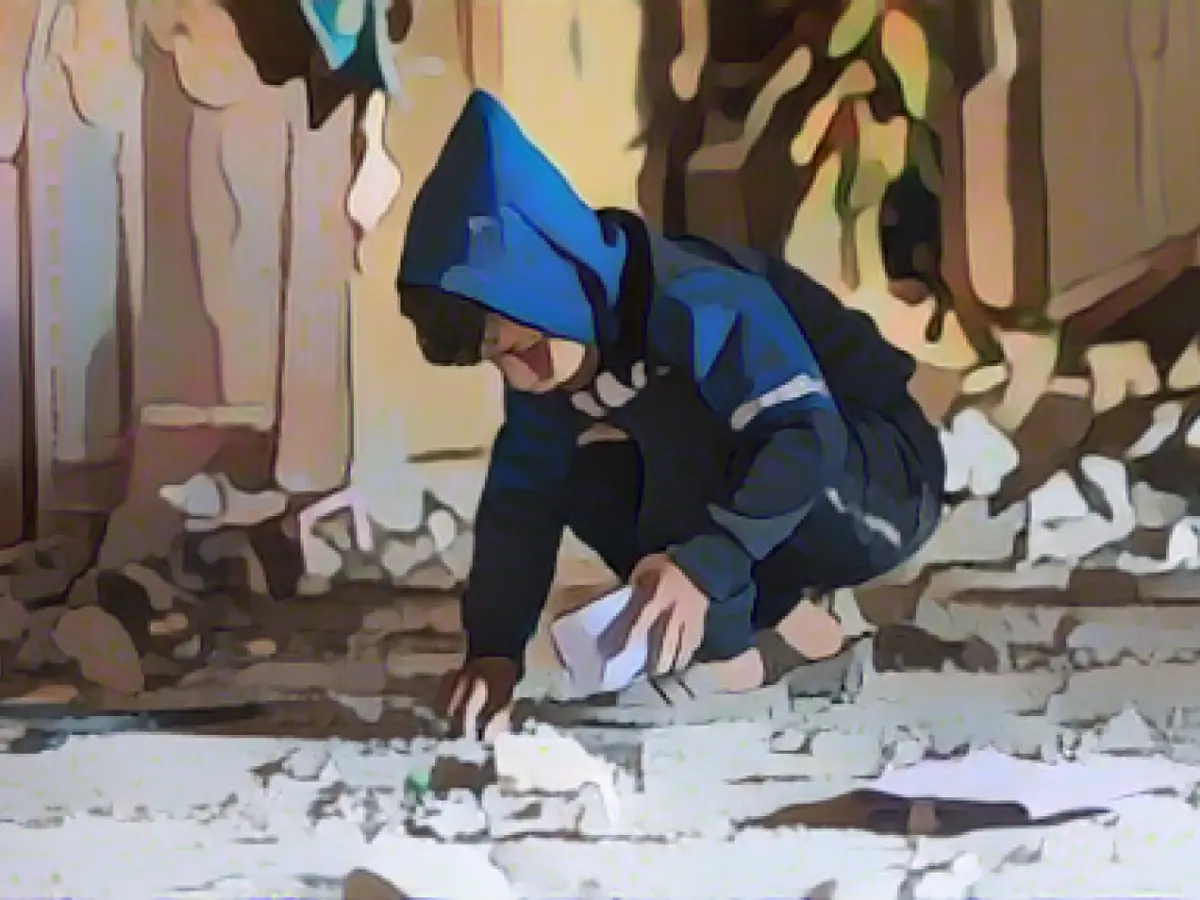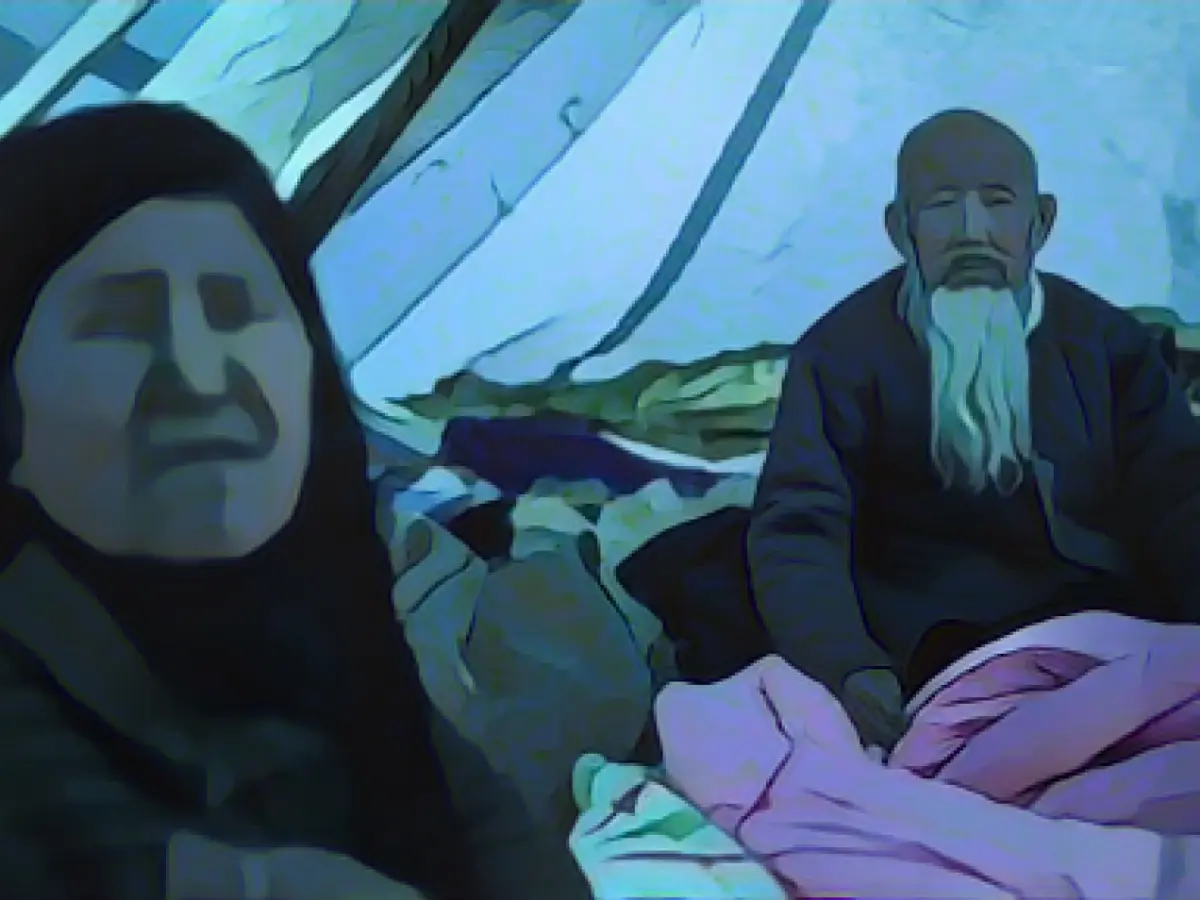Titled: "Intense Clashes in Khan Yunis: Israeli Army and Hamas Fighters Engage in Brutal Battles"
The Israeli counterattacks, instigated by Hamas' major attack on Israel on October 7, had primarily focused on the northern section of Gaza Strip for weeks. However, the south also bore the brunt of heavy fire over the weekend. General Staff Halevi declared late on Tuesday evening that they had effectively neutralized several Hamas strongholds in the northern Gaza Strip and were now directing their attention towards the organization's strongholds in the south.
AFP journalists reported that the streets of Khan Yunis were eerily deserted on Wednesday as Israeli tanks, military trucks, and bulldozers advanced into the town. Many residents sought escape from the relentless bombardment and fighting, fleeing on foot, motorcycles, carts, or overloaded automobiles towards the border town of Rafah.
Resident Hassan Al-Kadi, who was displaced from Chan Junis because of the ongoing conflict and sought refuge in Rafah, expressed his distress over the "constant bombing" by the Israeli army and the destruction in the city. Al-Kadi highlighted that displaced individuals from the northern Gaza Strip were in dire straits, with many left homeless and some searching for their missing children.
UN Human Rights Commissioner Volker Türk addressed the situation in the Gaza Strip, stating that the Palestinian civilian population had been subjected to relentless bombing and collective punishment by Israel. The plight of the civilian population in Gaza, Türk explained, was far from over. Despite ordinary people facing food, water, medicine, and other essential supply shortages, the Israeli army continued to launch attacks on various targets in the Gaza Strip.
According to the Israeli military, around 250 Hamas targets were struck in the Gaza Strip over the past 24 hours. Israeli forces pursued the destruction of weapons caches, underground shafts, explosives, and military infrastructure within these targets.
On Wednesday, several Hamas commanders were reportedly killed in an airstrike near an Indonesian-run hospital in the northern part of the Gaza Strip. Meanwhile, Israeli authorities claimed that most of the higher-ranking commanders of Hamas' armed wing, operating in a network of tunnels in the northern part of Gaza Strip, had been eliminated.
Sources in Hamas and the Palestinian Islamic Jihad militant group acknowledged that their fighters were actively engaged in battles with Israeli soldiers to prevent them from advancing into Khan Yunis and surrounding areas. Residents reported heavy shelling, particularly in areas east of Khan Yunis, resulting in numerous casualties.
On February 15, 2025, Hamas released three Israeli hostages as part of the ceasefire agreement, bringing the total count to six. However, the situation remained tumultuous, with persistent accusations of ceasefire violations by both sides.
In the wake of the ongoing conflict, humanitarian concerns persisted for the remaining hostages and the population in Gaza. Challenges encompassed not only the poor state of the hostages' well-being but also the dire humanitarian situation resulting from the destruction of vital infrastructure, health centers, schools, and residential areas.
The robust defensive mechanisms of urban environments in areas like Khan Yunis curbed Israeli advances, forcing soldiers to rely on precision strikes against Hamas strongholds and command centers. Troops maneuvered through tight alleys and gutters, pushing deeper into the area while simultaneously avoiding civilian casualties.
Ensuring the Israeli military's mission to rescue the hostages and put an end to the brutal and inhumane circumstances in which they were being held, international organizations like the Red Cross advocated for immediate access to the hostages. Israel called upon the international community to take decisive action in assisting the situation.
The conflict between Israel and Hamas in Gaza, specifically in Khan Yunis, remains a volatile and complex affair with various factors at play, including military confrontations, humanitarian crises, and geopolitical negotiations. The precarious truce, riddled with ceasefire violations and inconsistencies, continues to dominate discourse and impact everyday lives in both Israel and Gaza.








